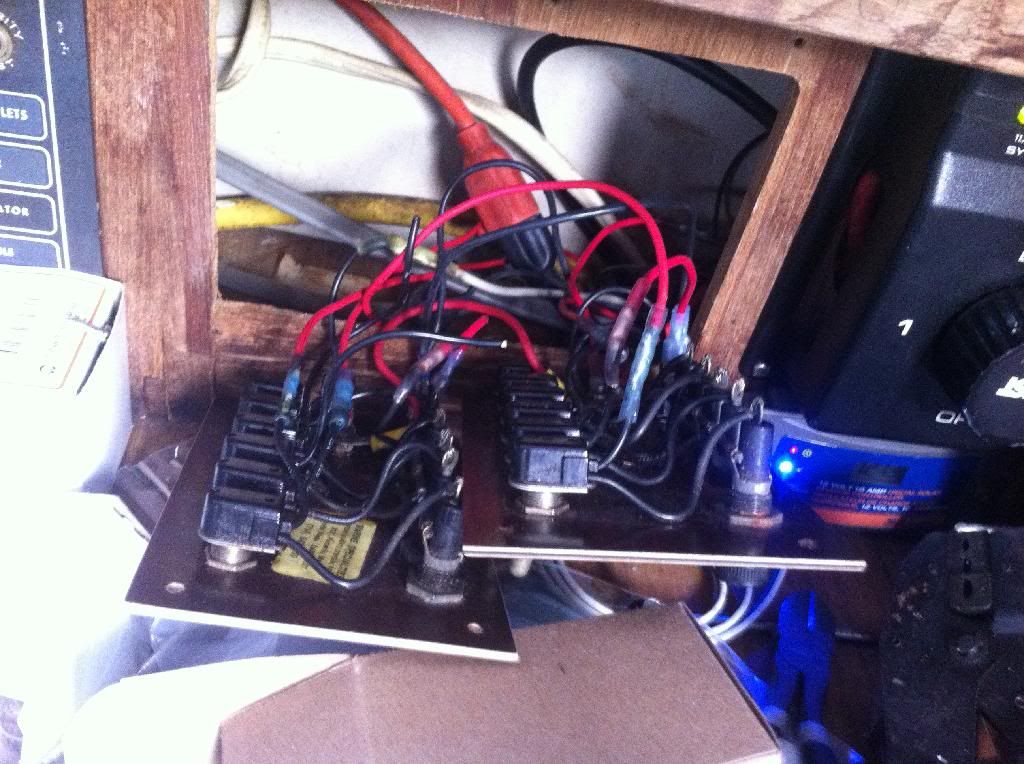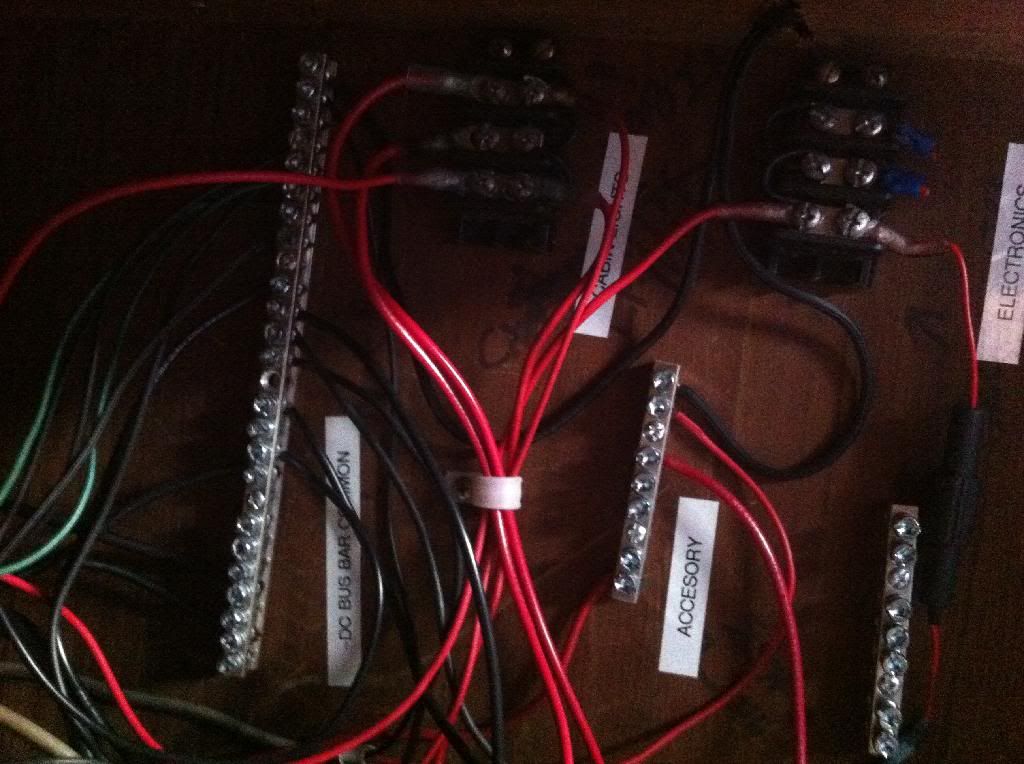Hi all. I am doing a project to clean-up/improve the wiring in my Newport 27. Some of this isn't specific to Atomic 4 engines, and some is. I'd be glad to share as much of the project that people are interested in (also installing LED lights, an entertainment center, USB power ports).
Currently, the fuses and switches are panel mounted on starboard side of the companion way, and the wiring resembles spaghetti. I am designing a (hopefully) better, organized solution for the wiring cabinet. I plan on leaving the switches in the same area, but upgrading the switch looks; moving the fuses inside, and changing from glass tubes to blade fuses; and updating the supply and return to batteries.
I have reviewed information in several books on yacht electrical systems, and have viewed several schematics on Moyer Marine's site. Much of it was helpful. I have some questions though. And, I realize that the answer to some of these questions might begin with "It depends upon your implementation..."
Anyway, I have a few questions I'd like to get your input on regarding positive supply cables. As I understand it, there should be a fuse close to the battery before heading to the distribution panel. My boat doesn't have this that I can find... so I bought a couple ANL fuse holders. Can someone please help me with determining the appropriate size fuse to supply the distribution panel?
Is the correct way to do this, to add up all the loads the lead might supply, and then chose the next bigger size fuse? My boat doesn't have watermaker, water heater, electric windlass, refrigerator... pretty basic: interior lights, bilge fan, bilge pump, navigation lights, depth sounder, atomic 4, marine VHF radio, stereo head. I am planning on adding 5x 2.1A USB ports, and a TV (approx 3 A).
On a similar note, I think I remember reading that the positive lead to the starter motor doesn't need to be fused. But I don't remember reading that it shouldn't be fused. What is your take on this? And if a fuse on the starter lead is a good idea, what should the fuse size be for the Atomic 4 starter? 200A?
And likewise, my boat has an outboard as an auxiliary motor which has an electric starter. I was thinking I might hard wire it to the batteries too. The manual doesn't state anything about using a fuse on the supply, but it does state the battery must have 245 CCA, 325 MCA. Is there any way to determine from that what size fuse to put on it? Perhaps I should just use a clamp meter and then start the motor and use the reading from that as a guideline for a fuse?
Sorry this message is so long. Your help is appreciated.
Eric
Eric
Currently, the fuses and switches are panel mounted on starboard side of the companion way, and the wiring resembles spaghetti. I am designing a (hopefully) better, organized solution for the wiring cabinet. I plan on leaving the switches in the same area, but upgrading the switch looks; moving the fuses inside, and changing from glass tubes to blade fuses; and updating the supply and return to batteries.
I have reviewed information in several books on yacht electrical systems, and have viewed several schematics on Moyer Marine's site. Much of it was helpful. I have some questions though. And, I realize that the answer to some of these questions might begin with "It depends upon your implementation..."
Anyway, I have a few questions I'd like to get your input on regarding positive supply cables. As I understand it, there should be a fuse close to the battery before heading to the distribution panel. My boat doesn't have this that I can find... so I bought a couple ANL fuse holders. Can someone please help me with determining the appropriate size fuse to supply the distribution panel?
Is the correct way to do this, to add up all the loads the lead might supply, and then chose the next bigger size fuse? My boat doesn't have watermaker, water heater, electric windlass, refrigerator... pretty basic: interior lights, bilge fan, bilge pump, navigation lights, depth sounder, atomic 4, marine VHF radio, stereo head. I am planning on adding 5x 2.1A USB ports, and a TV (approx 3 A).
On a similar note, I think I remember reading that the positive lead to the starter motor doesn't need to be fused. But I don't remember reading that it shouldn't be fused. What is your take on this? And if a fuse on the starter lead is a good idea, what should the fuse size be for the Atomic 4 starter? 200A?
And likewise, my boat has an outboard as an auxiliary motor which has an electric starter. I was thinking I might hard wire it to the batteries too. The manual doesn't state anything about using a fuse on the supply, but it does state the battery must have 245 CCA, 325 MCA. Is there any way to determine from that what size fuse to put on it? Perhaps I should just use a clamp meter and then start the motor and use the reading from that as a guideline for a fuse?
Sorry this message is so long. Your help is appreciated.
Eric
Eric




Comment